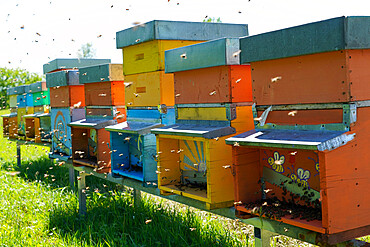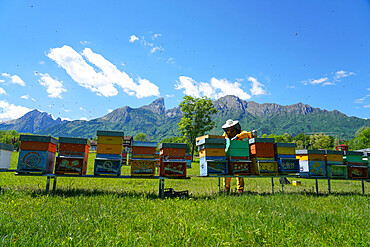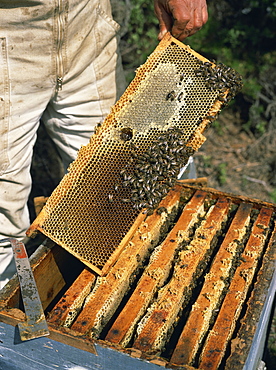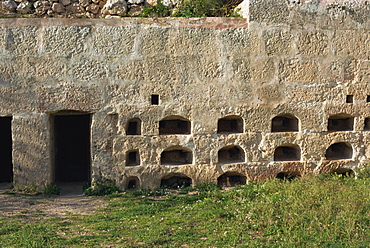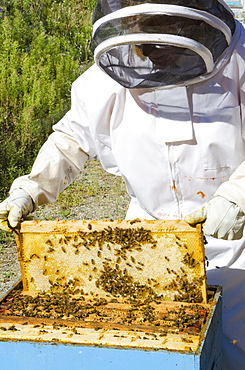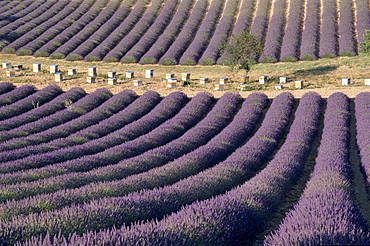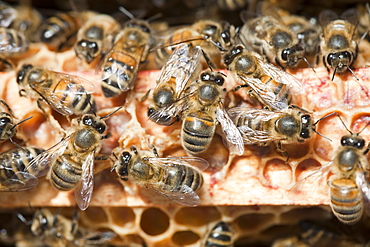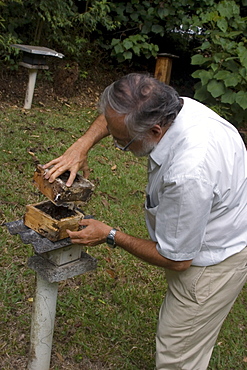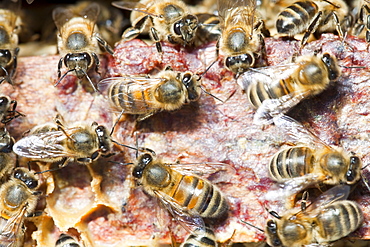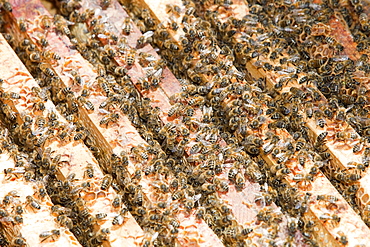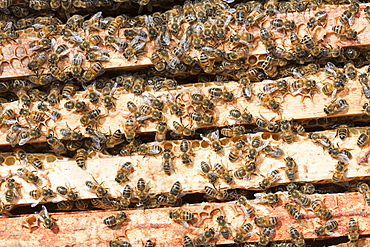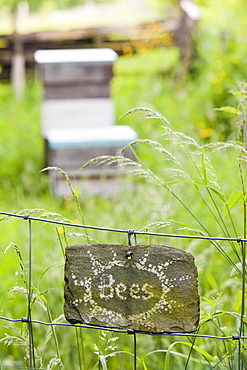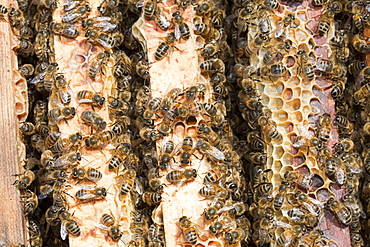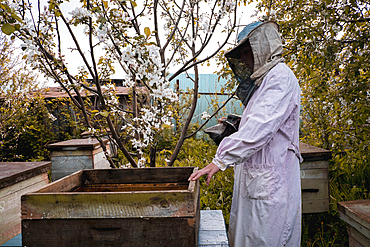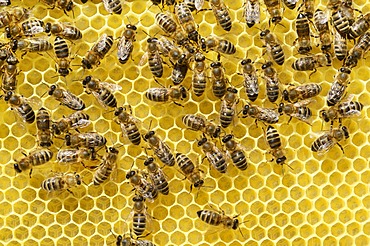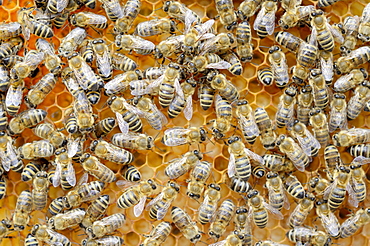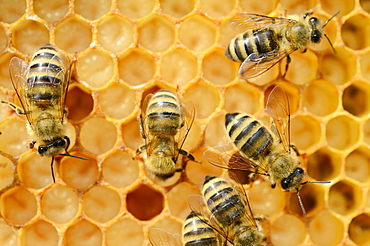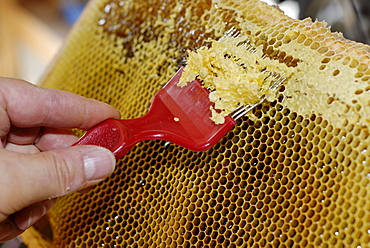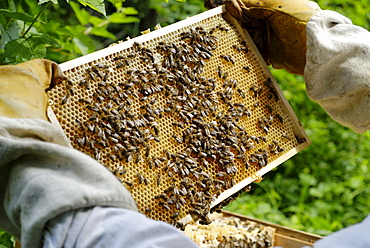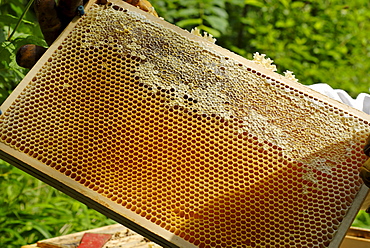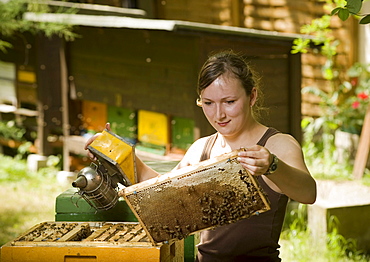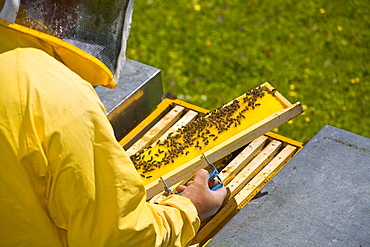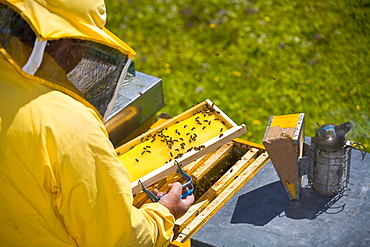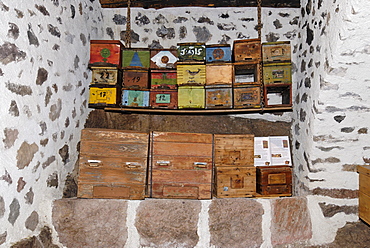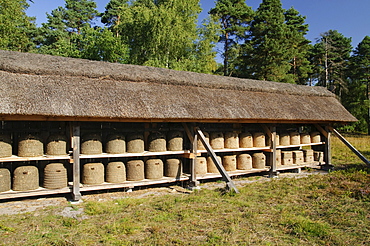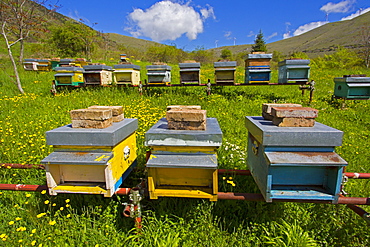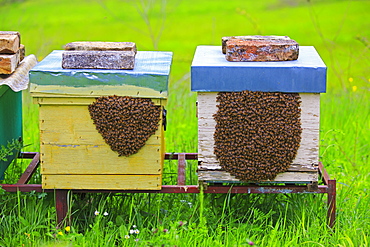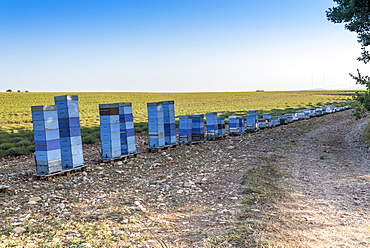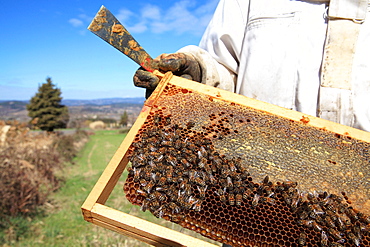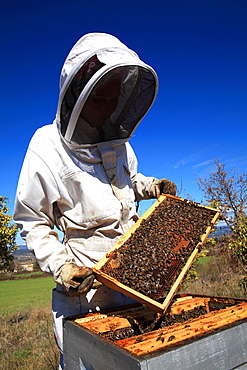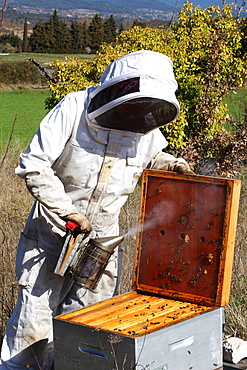Results
14 results found
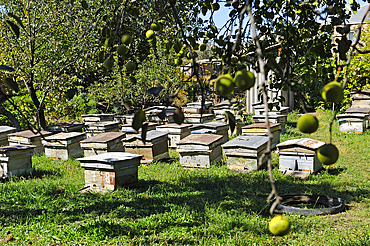
Bee hives in the garden of Raznik Mouradyan, beekeeper at Vedi, a village in Ararat plain, Artashat, Armenia, Eurasia
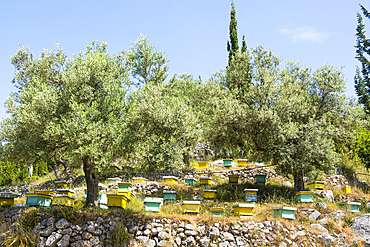
Bee hives set in an olive grove, Llogara National Park, a park centered on the Ceraunian Mountains along the Albanian Riviera in Southwestern Albania, Europe

Ancient beehives in the Beekeeping Museum, Stripeikiai, Aukstaitija National Park, Lithuania, Europe
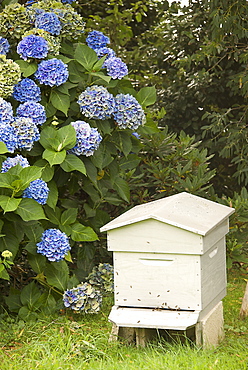
Bee hive and blue hydrangea, Botanical gardens of Chateau de Vauville, Cotentin, Normandy, France, Europe
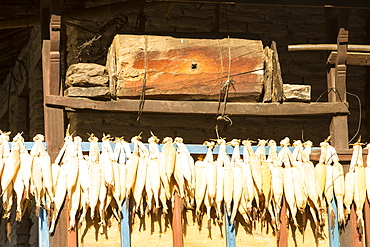
Maize drying for winter food and the traditional log bee hive of a subsistence farmer in the Annapurna Himalayas, Nepal, Asia

Beehives (honey is an important state industry) in the Pieman River State Reserve, Corinna, North West, Tasmania, Australia, Pacific

Beehives (honey is an important state industry) in the Pieman River State Reserve, Corinna, North West, Tasmania, Australia, Pacific

Beekeeper Bill Mackereth checks his hives for signs of Varoa mite damage, Cockermouth, Cumbria, England, United Kingdom, Europe

A bee with deformed wings as a result of attack by Varoa mites in a beehive in Cockermouth, Cumbria, England, United Kingdom, Europe

A beehive infected and damaged by the Varoa mite, Cockermouth, Cumbria, England, United Kingdom, Europe

Beekeeper Bill Mackereth checks his hives for signs of Varoa mite damage, Cockermouth, Cumbria, England, United Kingdom, Europe

A bee with deformed wings as a result of attack by Varoa mites in a beehive in Cockermouth, Cumbria, England, United Kingdom, Europe
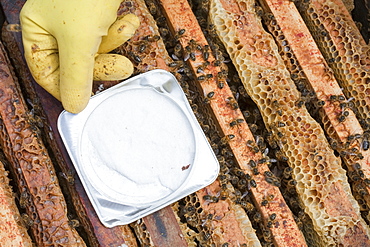
Apiguard being used to combat the Varroa mite in hives in Cockermouth Cumbria, England, United Kingdom, Europe
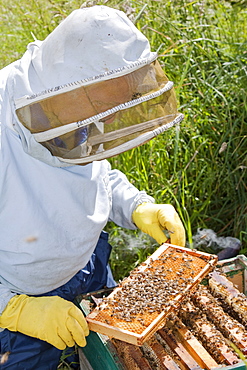
Beekeeper Bill Mackereth checks his hives for signs of Varoa mite damage, Cockermouth, Cumbria, England, United Kingdom, Europe
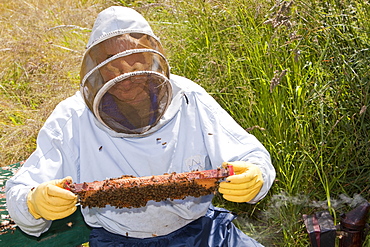
Beekeeper Bill Mackereth checks his hives for signs of Varoa mite damage, Cockermouth, Cumbria, England, United Kingdom, Europe
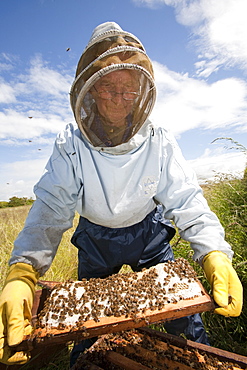
Beekeeper Bill Mackereth checks his hives for signs of Varoa mite damage, Cockermouth, Cumbria, England, United Kingdom, Europe

Stingless bee hive of Melipona bicolor at University of Vicosa, Vicosa, Minas Gerais, Brazil, South America
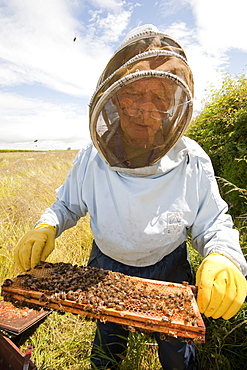
Beekeeper Bill Mackereth checks his hives for signs of Varoa mite damage, Cockermouth, Cumbria, England, United Kingdom, Europe

Beekeeper Bill Mackereth checks his hives for signs of Varoa mite damage, Cockermouth, Cumbria, England, United Kingdom, Europe

Beekeeper Bill Mackereth checks his hives for signs of Varoa mite damage, Cockermouth, Cumbria, England, United Kingdom, Europe

Beekeeper Bill Mackereth checks his hives for signs of Varoa mite damage, Cockermouth, Cumbria, England, United Kingdom, Europe
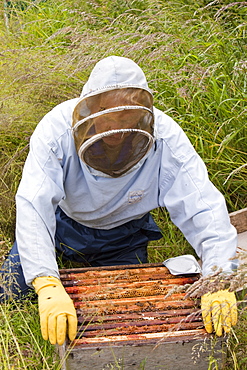
Beekeeper Bill Mackereth checks his hives for signs of Varoa mite damage, Cockermouth, Cumbria, England, United Kingdom, Europe
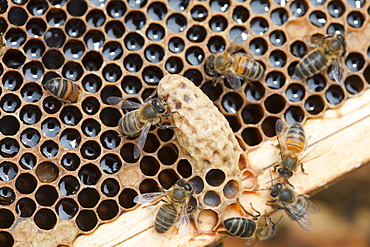
A queen cell in a beehive infected and damaged by the Varoa mite, Cockermouth, Cumbria, England, United Kingdom, Europe
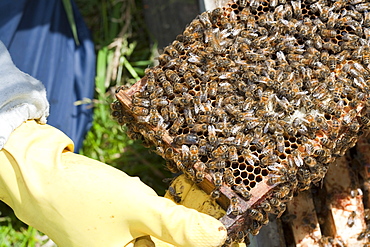
Beekeeper Bill Mackereth checks his hives for signs of Varoa mite damage, Cockermouth, Cumbria, England, United Kingdom, Europe
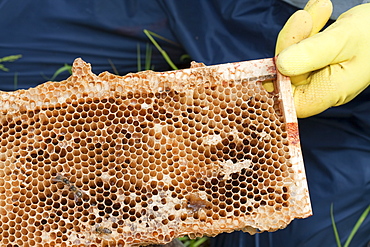
Beekeeper Bill Mackereth checks his hives for signs of Varoa mite damage, Cockermouth, Cumbria, England, United Kingdom, Europe
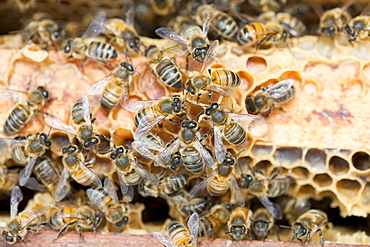
A beehive infected and damaged by the Varoa mite, Cockermouth, Cumbria, England, United Kingdom, Europe

Bee hive of Tetragonisca angustula at University of Vicosa, Vicosa, Minas Gerais, Brazil, South America
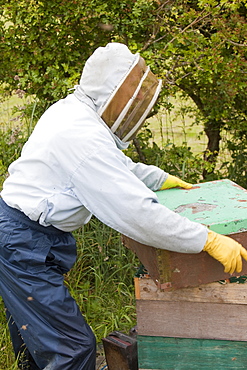
Beekeeper Bill Mackereth checks his hives for signs of Varoa mite damage, Cockermouth, Cumbria, England, United Kingdom, Europe
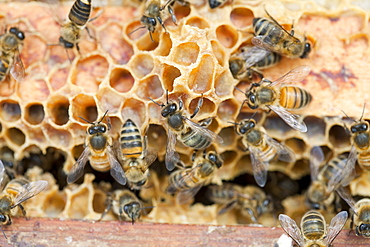
A beehive infected and damaged by the Varoa mite, Cockermouth, Cumbria, England, United Kingdom, Europe
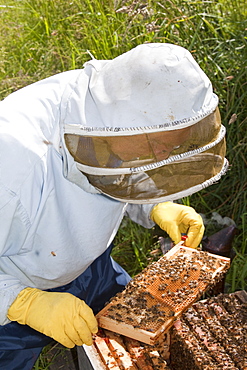
Beekeeper Bill Mackereth checks his hives for signs of Varoa mite damage, Cockermouth, Cumbria, England, United Kingdom, Europe

A beehive infected and damaged by the Varoa mite, Cockermouth, Cumbria, England, United Kingdom, Europe

A beehive infected and damaged by the Varoa mite, Cockermouth, Cumbria, England, United Kingdom, Europe
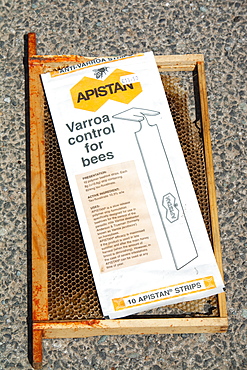
Apistan being used to combat the Varroa mite in hives in Cockermouth Cumbria England, United Kingdom, Europe

Stingless bee colony of Melipona bicolor at University of Vicosa, Vicosa, Minas Gerais, Brazil, South America

A beehive infected and damaged by the Varoa mite, Cockermouth, Cumbria, England, United Kingdom, Europe

Apiguard being used to combat the Varroa mite in hives in Cockermouth Cumbria, England, United Kingdom, Europe
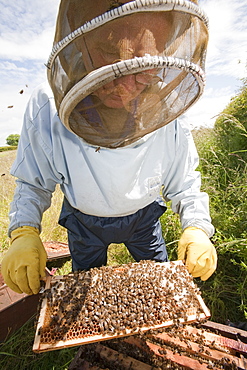
Beekeeper Bill Mackereth checks his hives for signs of Varoa mite damage, Cockermouth, Cumbria, England, United Kingdom, Europe
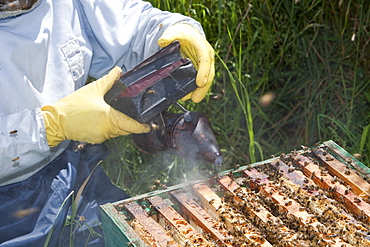
Beekeeper Bill Mackereth checks his hives for signs of Varoa mite damage, Cockermouth, Cumbria, England, United Kingdom, Europe

A beehive infected and damaged by the Varoa mite, Cockermouth, Cumbria, England, United Kingdom, Europe

A beehive infected and damaged by the Varoa mite, Cockermouth, Cumbria, England, United Kingdom, Europe
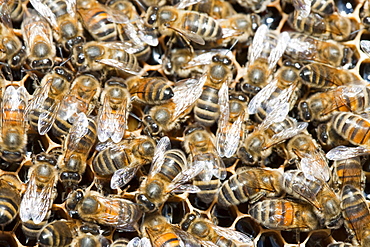
A beehive infected and damaged by the Varoa mite, Cockermouth, Cumbria, England, United Kingdom, Europe

A beehive infected and damaged by the Varoa mite, Cockermouth, Cumbria, England, United Kingdom, Europe
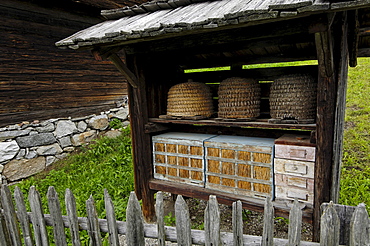
Bee hives in the South Tyrolean local history museum at Dietenheim, Puster Valley, South Tyrol, Italy
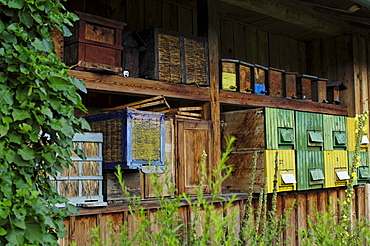
Bee hives in the South Tyrolean local history museum at Dietenheim, Puster Valley, South Tyrol, Italy

Honey bees (Apis mellifera), worker bees caring for the brood, on brood cells, larvae, circa 8 days, in honeycomb cells

Typical Mallorcan honeycombs, Panades de sobrassada, Forn de Can Pomar. Campos, Mallorca. Balearic Islands. Spain.

Blagoevgrad, Bulgaria - February 10, 2019: Worshippers light candles on jars with honey during a religious ritual marking the day of Saint Haralampi - the Orthodox patron saint of beekeepers - in the church of the Presentation of the Blessed Virgin
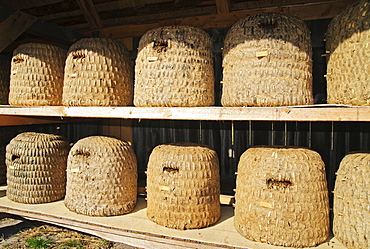
Woven beehives in a traditional bee fence near Undeloh, Lueneburg Heath Nature Park, Lower Saxony, Germany, Europe

Bee hive, the entry hole for the bees is the mouth of a carved face, left a caricature of George Bush

Beekeeper showing honeycomb, beekeeping in the Amazon rain forest is part of agricultural activity in a settlement of formerly landless peasants, land reform, Entre Rios Province, Mato Grosso, Brazil, South America
